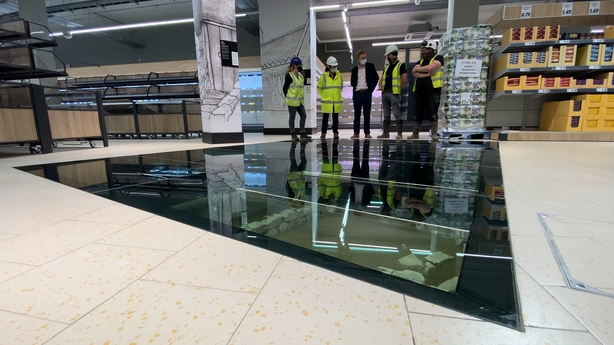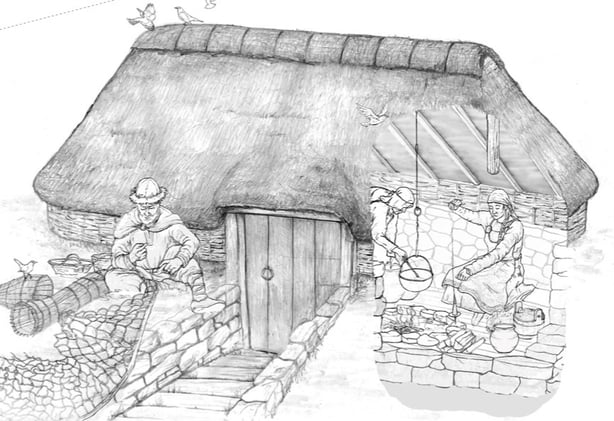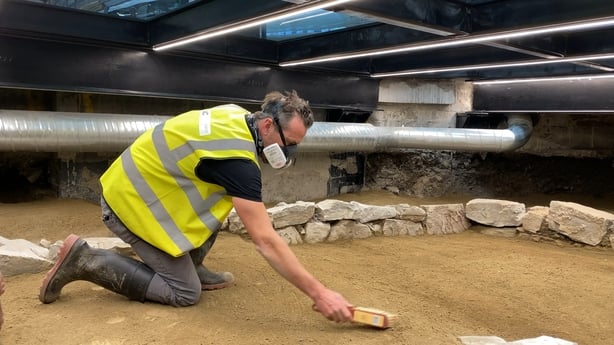Melodi
Disaster Cat
Some people were wondering on some of the recent archeological threads what happens when finds are located on the sites for intended construction projects and since probably 80 percent of the big finds in These Islands (UK, Ireland, even Iceland) as well as mainland Europe tend to be the happy accidents of Legally Mandatory Rescue Archeology surveys, this is a real issue.
A good deal has changed just in the quarter-century we've lived over here, from farmers only get slaps on the wrists from knocking down actual castle towers before an excavator can take a photo, to recently a court in England ordering a construction company that had broken a court order by "knocking down" a historical 16th or 17th-century pub (with roots going back further) in the middle of the night to "rebuild it down to the very last brick no matter the cost" or some of the construction company owners were not only looking at millions in fines but probably a jail cell as well.
To get business to go along with the serious changes in custom, expense, and convenience that make it "cheaper" in the past to simply destroy and ask forgiveness later (which increasingly they were not getting) it is becoming more common for "solutions" to be found that make everyone if not happy at least able to live with it.
Only the most absolutely amazing finds (like the new missing rings at Stone Henge a few miles away - the second henge in fact among other things, only of wood) or an entire unexcavated Norse City (the one in Waterford may be the largest that remains on Earth) is allowed to totally stop a building or in the case of Waterford, re-route a major highway.
But Dublin (and Lidles) are finally getting doing what has already started to happen in the UK - Excavate the site, then build the modern building AROUND OR ABOVE the excavation site and insert display areas in the shops, banks, museums parking lots, etc. so the public can view them, sometimes excavations continue on sites that may take centuries to finish and/or the public can even take guided tours of.
I personally think this is a wonderful turn of events, especially since this was one of the new excavations that should that Viking Dublin was probably twice the size that was originally thought and this is probably the first of a lot of Norse buildings that are going to be found with all the rebuilding going on there. I look forward to a lot more! Melodi

 www.rte.ie
New Lidl store gives shoppers glimpse of Dublin's past
www.rte.ie
New Lidl store gives shoppers glimpse of Dublin's past
Updated / Wednesday, 14 Oct 2020 07:00
By Philip Bromwell
Shoppers at a new Lidl store in Dublin will get a unique insight into the city's medieval past.
The remains of an 11th century house are clearly visible beneath a glass section of the floor of the store on Aungier Street in the city centre.
The sunken-floored structure was discovered during excavations of the site, close to Dublin Castle.
"It is a unique structure for Dublin," said Paul Duffy from IAC Archaeology.
"I am sure it functioned as many things. As a house or as an extra space for the family. It is a domestic structure so you would have to imagine that there would have been a suburb here of Hiberno-Norse Dubliners who were effectively the ancestors of the Vikings," he added.
 The remains of an 11th century house can be seen beneath a glass section of the floor of the store.
The remains of an 11th century house can be seen beneath a glass section of the floor of the store.
A similar glass panel, near the store's checkouts, showcases an 18th century 'pit trap' associated with the stage workings of the former Aungier Street Theatre.
"It was the device that was used when you wanted an actor to come up and down and appear as if by magic on the stage.
"So we were delighted that such a meaningful part of the theatre was found, recognised and is now presented to the public. I think it's really fantastic that Lidl is displaying it right in front of their tills," said Linzi Simpson, consultant archaeologist on the project.
Information panels and artwork interpreting the remains are also displayed throughout the new store.
 The 11th century structure was built by the Hiberno-Norse inhabitants of Dublin who were ancestors of the Vikings. (Image: Matthew Ryan)
The 11th century structure was built by the Hiberno-Norse inhabitants of Dublin who were ancestors of the Vikings. (Image: Matthew Ryan)
"Lidl has over 10,000 stores throughout the world. But this is something very unique and it really makes archaeology accessible to the public," said Vincent Cronnolly from Lidl Ireland.
The foundations of the medieval parish church of Saint Peter which served Dublin parishioners from c.1050 to c.1650 are also preserved beneath working areas of the new building.
"Hopefully this project sets a new benchmark for the treatment of archaeological heritage in the city. There has been a very collaborative approach from all sides.
"I think we have to challenge the Celtic Tiger approach of putting up a hoarding, excavating a site and then putting up a development," said Dublin City Archaeologist Dr Ruth Johnson.
 Archaeologist Paul Duffy at work beneath the glass floor of the Aungier Street store.
Archaeologist Paul Duffy at work beneath the glass floor of the Aungier Street store.
Reflecting on the unique glass display for the 11th century house, Paul Duffy said: "I'm waiting for the Dubliners to come up with a name for this thing. It's going to have its own Dublin nickname like the 'stiletto in the ghetto' for The Spire. But it's going to be part of city life and the story of Dublin."
Lidl says 24 people will be employed in the €3 million store which opens tomorrow.
The rest of the development comprises student accommodation.
A good deal has changed just in the quarter-century we've lived over here, from farmers only get slaps on the wrists from knocking down actual castle towers before an excavator can take a photo, to recently a court in England ordering a construction company that had broken a court order by "knocking down" a historical 16th or 17th-century pub (with roots going back further) in the middle of the night to "rebuild it down to the very last brick no matter the cost" or some of the construction company owners were not only looking at millions in fines but probably a jail cell as well.
To get business to go along with the serious changes in custom, expense, and convenience that make it "cheaper" in the past to simply destroy and ask forgiveness later (which increasingly they were not getting) it is becoming more common for "solutions" to be found that make everyone if not happy at least able to live with it.
Only the most absolutely amazing finds (like the new missing rings at Stone Henge a few miles away - the second henge in fact among other things, only of wood) or an entire unexcavated Norse City (the one in Waterford may be the largest that remains on Earth) is allowed to totally stop a building or in the case of Waterford, re-route a major highway.
But Dublin (and Lidles) are finally getting doing what has already started to happen in the UK - Excavate the site, then build the modern building AROUND OR ABOVE the excavation site and insert display areas in the shops, banks, museums parking lots, etc. so the public can view them, sometimes excavations continue on sites that may take centuries to finish and/or the public can even take guided tours of.
I personally think this is a wonderful turn of events, especially since this was one of the new excavations that should that Viking Dublin was probably twice the size that was originally thought and this is probably the first of a lot of Norse buildings that are going to be found with all the rebuilding going on there. I look forward to a lot more! Melodi

New Lidl store gives shoppers glimpse of Dublin's past
Shoppers at a new Lidl store in Dublin will get a unique insight into the city's medieval past.
Updated / Wednesday, 14 Oct 2020 07:00
By Philip Bromwell
Shoppers at a new Lidl store in Dublin will get a unique insight into the city's medieval past.
The remains of an 11th century house are clearly visible beneath a glass section of the floor of the store on Aungier Street in the city centre.
The sunken-floored structure was discovered during excavations of the site, close to Dublin Castle.
"It is a unique structure for Dublin," said Paul Duffy from IAC Archaeology.
"I am sure it functioned as many things. As a house or as an extra space for the family. It is a domestic structure so you would have to imagine that there would have been a suburb here of Hiberno-Norse Dubliners who were effectively the ancestors of the Vikings," he added.

A similar glass panel, near the store's checkouts, showcases an 18th century 'pit trap' associated with the stage workings of the former Aungier Street Theatre.
"It was the device that was used when you wanted an actor to come up and down and appear as if by magic on the stage.
"So we were delighted that such a meaningful part of the theatre was found, recognised and is now presented to the public. I think it's really fantastic that Lidl is displaying it right in front of their tills," said Linzi Simpson, consultant archaeologist on the project.
Information panels and artwork interpreting the remains are also displayed throughout the new store.

"Lidl has over 10,000 stores throughout the world. But this is something very unique and it really makes archaeology accessible to the public," said Vincent Cronnolly from Lidl Ireland.
The foundations of the medieval parish church of Saint Peter which served Dublin parishioners from c.1050 to c.1650 are also preserved beneath working areas of the new building.
"Hopefully this project sets a new benchmark for the treatment of archaeological heritage in the city. There has been a very collaborative approach from all sides.
"I think we have to challenge the Celtic Tiger approach of putting up a hoarding, excavating a site and then putting up a development," said Dublin City Archaeologist Dr Ruth Johnson.

Reflecting on the unique glass display for the 11th century house, Paul Duffy said: "I'm waiting for the Dubliners to come up with a name for this thing. It's going to have its own Dublin nickname like the 'stiletto in the ghetto' for The Spire. But it's going to be part of city life and the story of Dublin."
Lidl says 24 people will be employed in the €3 million store which opens tomorrow.
The rest of the development comprises student accommodation.
Last edited:




